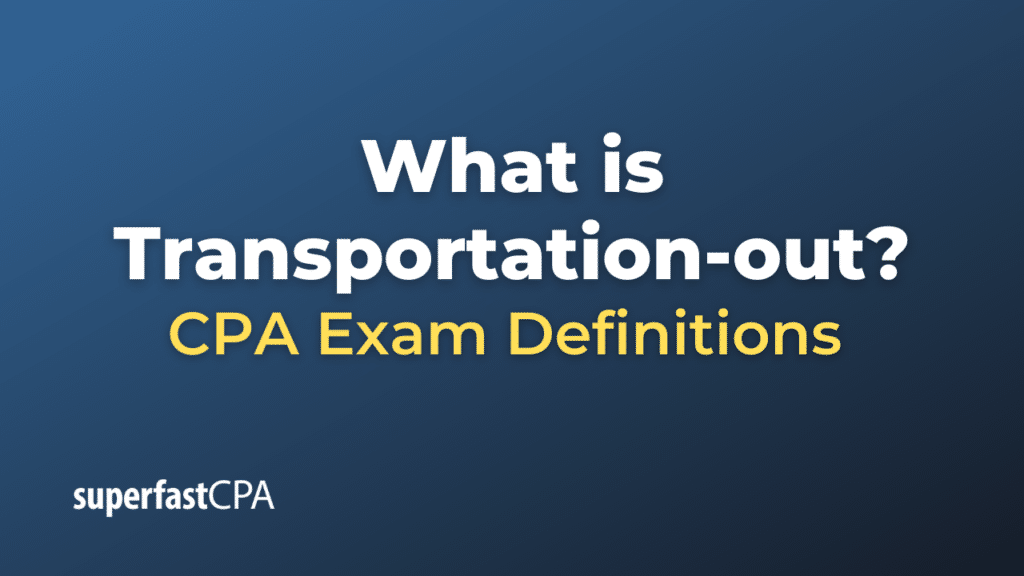Transportation-out
“Transportation-out” refers to the shipping or freight costs associated with delivering goods from a seller to a customer. In accounting terms, transportation-out costs are typically considered a selling expense, rather than being added to the cost of inventory (like transportation-in costs).
When a seller incurs shipping costs to send goods to a customer, these costs are generally treated as an operating expense and are not capitalized into the value of the inventory. Instead, they are expensed in the period incurred and show up on the income statement as a part of selling or operating expenses.
Why is this distinction important?
When a company purchases inventory, transportation-in costs (the costs to get the inventory to the company’s location) are added to the cost of inventory because they represent the total cost of acquiring and preparing goods for sale. Conversely, transportation-out costs are associated with the sale and delivery of goods to customers and are considered a part of the selling process. Thus, they’re treated as a selling expense.
Example of Transportation-out
Let’s look at a detailed example of how “transportation-out” costs are recorded in accounting:
Scenario:
Imagine a company called “TechGadgets Inc.” that sells electronic devices. A customer orders a laptop for $1,000. To fulfill this order, TechGadgets Inc. has to ship the laptop, incurring a shipping cost of $30. The customer pays the $1,000 immediately upon order, but TechGadgets Inc. bears the $30 shipping cost. The cost of the laptop to TechGadgets (from its inventory) is $700.
Accounting for the Sale and Transportation-Out Costs:
- Journal entry for the sale of the laptop:
Debit: Cash $1,000
Credit: Sales $1,000
(Description: Recording the sale of the laptop to the customer) - Journal entry for the cost associated with the sold laptop:
Debit: Cost of Goods Sold $700
Credit: Inventory $700
(Description: Recording the cost of the laptop that was sold) - Journal entry for the transportation-out costs:
Debit: Selling Expenses (or Shipping Expense or Transportation-out Expense) $30
Credit: Cash $30
(Description: Recording the shipping cost for delivering the laptop to the customer)
After these entries, the company’s income statement would show a sale of $1,000, cost of goods sold of $700, and a selling (or shipping) expense of $30. The gross profit from this sale (Sales minus COGS) would be $300, and the net profit (after deducting the shipping expense) would be $270.
This example clearly illustrates that while both the cost of the product (COGS) and the transportation-out costs reduce the profit from a sale, they are accounted for in different expense categories. The COGS relates directly to the product’s cost, while transportation-out is a selling expense associated with delivering the product to the customer.













